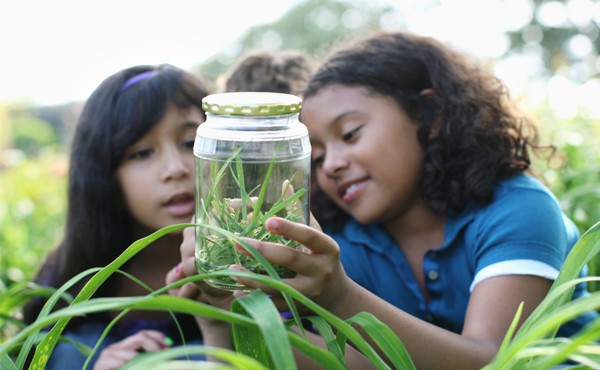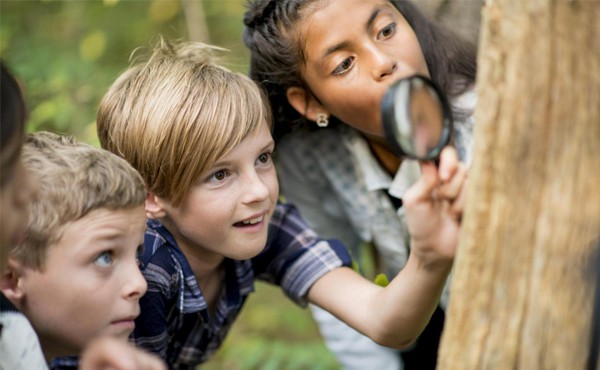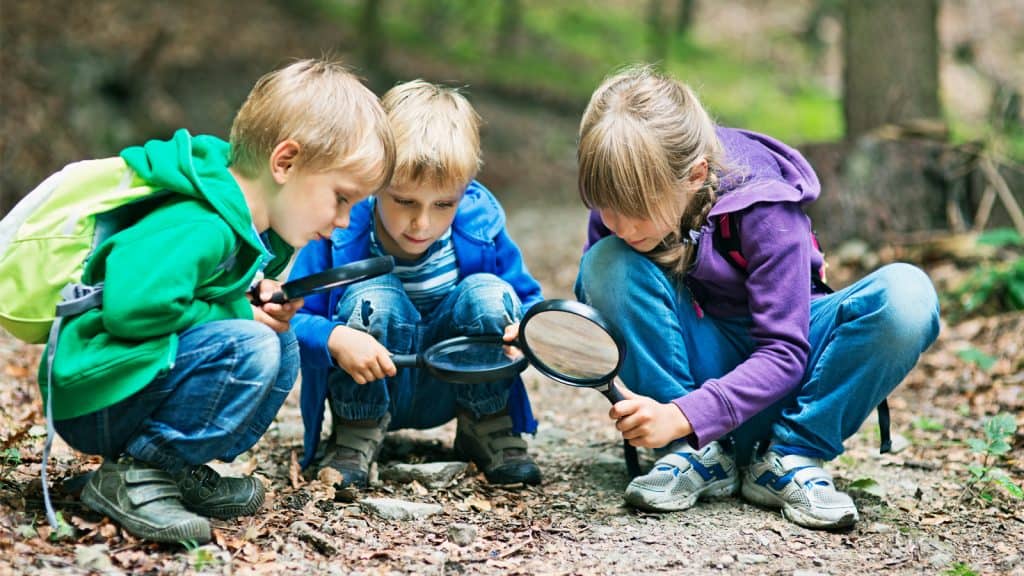Sometimes the best classroom isn’t in a room at all—it’s the great outdoors. Nature play has many benefits for children. These include improved concentration, stress relief, and better creativity, and other benefits.
September 4 is National Wildlife Day in America. There’s no better time to get outside, have some adventure, and learn about local wildlife.
Not everyone can live in the mountains with a forest out their back door. But that doesn’t mean nature isn’t all around. Your child can explore nature in suburban backyards, city sidewalks, and local parks.
Here are some fun activities to help get in touch with nature.
 Go on a Nature Scavenger Hunt
Go on a Nature Scavenger Hunt
Going on a nature walk with your children is a fun way to get outside, get moving, and see the world around you. Add a little excitement with a classic nature game for children: the scavenger hunt.
A nature scavenger hunt is one way for children to learn to use their senses to observe wildlife. No matter where you live, you’ll likely see birds, bugs, and small mammals on your walk.
To make a game of it, write your own bingo card or go to a site that hosts nature scavenger hunt printables. Talk to your child about the things you see, and have them check off boxes like “find a pinecone” or “find a smooth rock.”
Backyard Birding: Get to Know Your Feathered Friends
During the pandemic, many people have discovered a love of birdwatching, and for good reason. Backyard birdwatching is a fun, accessible, and practically no-cost hobby your family can do right from your window.
You can attract birds to your home by putting out bird feeders. Birds at my House (Pájaros en mi Casa) has instructions for making bird feeders from pine cones, peanut butter, and bird seed. If you can’t use peanut butter, Fireflies and Mud Pies has alternative peanut-free ingredients.
Hang them up outside your windows—no yard required—to attract different types of birds.
Part of the fun of birdwatching is identifying the kinds of birds you see. Bird field guides (think Audubon Society or Sibley’s) are plentiful, and can often be found in second-hand bookstores.
Use this bird attributes poster (cartel de atributos de los pájaros) to discuss features all birds have in common (el afiche de las aves). Your child can also draw your backyard birds (las aves) with this activity where they fill in the missing parts.
Birdwatching is a good chance to talk with your child about how animals adapt to humans. And you can help birds stay safe, and learn about the human impact on the environment, while making window decals as a fun craft.
Find Bugs All Around You 
Some of the most fascinating everyday wildlife to learn from are all around you: bugs. Insects and bugs are creepy-crawly fun, super-interesting, and easy to find.
There are plenty of fun ways to observe bugs close up. Use this sheet (cartel de partes de los insectos) to see the body parts insects have in common and discuss their functions.
The read-aloud book Creepy Crawlers (Bichos espeluznantes) is a good introduction to neighborhood bug activities. To study bugs up close, put some leaves and twigs in a glass jar and punch holes in the lid. Go outside and turn over some rocks or bricks. See what’s underneath, and help your child gather a few for your jar. (Even though most bugs are harmless, parents should supervise closely just in case.)
Talk with your kids about what the bugs are doing. Which bugs are helpful? Draw a picture of your favorite bug. Be sure to let the bugs free near where you captured them when you’re done studying.
To attract even more bugs to observe, plant pollinator-friendly plants in a garden or pot. This will also provide a lesson about the environment. You could also make or buy an insect hotel to attract different types of bugs.
Here are more bug-based activities (aprendiendo juntos: invertebrados) perfect for your little learner.

